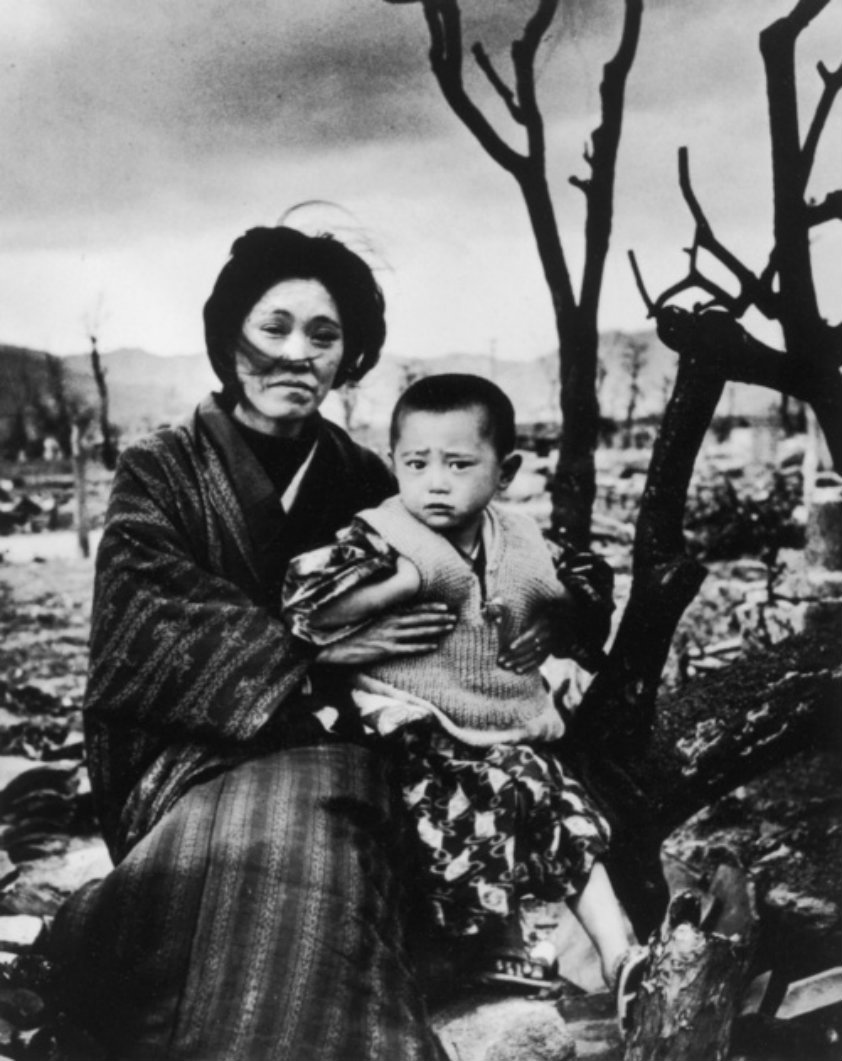Until 1996, the Japanese government forcibly sterilized people with vision problems, hearing problems, intellectual disabilities, mental illnesses, and hereditary diseases. Today, transgender people face forced sterilization if they want to be legally recognized as their chosen gender.
The focus of the original 1948 eugenics law isn’t the same as the current law forcing transgender people to give up their fertility, but they are related. Both came from medical concerns and concerns about the welfare of Japanese citizens. But we have to first go back to World War II in order to trace Japan’s modern history of sterilization.
Unit 731
During World War II, the Japanese Army conducted human tests to develop biological weapons, including anthrax, cholera, and a dozen other diseases. Known as Unit 731, doctors performed research that found treatments for the medical problems Japanese soldiers faced (Kristof, 1995). The results saved many Japanese lives, but at the cost of an estimated 3,000 people. Most victims of the research were Russian and Chinese.
The research involved terrible, but well-designed (that is, scientifically designed with limited variables and controls) experiments. One medical assistant accounted of dissecting a man alive (Kristof, 1995):
I cut him open from the chest to the stomach, and he screamed terribly, and his face was all twisted in agony. He made this unimaginable sound, he was screaming so horribly. But then he finally stopped. This was all in a day’s work for the surgeons, but it really left an impression on me because it was my first time.
He stated anesthetics might have skewed the results of the study.
Chinese prisoners were used for practice surgeries. One doctor remembered watching a practice appendectomy, amputation of an arm, and a tracheotomy performed on these men. The doctors in training killed the men with an injection after the practice session ended.
Unit 731 remained a secret after the war because the United States granted the unit immunity from war crime prosecution in return for information. Kristof (1995) notes: “Japanese and American documents show that the United States helped cover up the human experimentation. Instead of putting the ringleaders on trial, it gave them stipends.”
This cover-up allowed Japan to pass its sterilization law in 1948. It verified the view that sacrificing the few for the “betterment” of society was laudable. The public remained unaware of Unit 731 and other forced medical procedures. In fact, the precursor to the current Health, Labor, and Welfare Ministry tolerated restraints, anesthesia, and deception while performing the sterilizations in 1949 (The Japan Times, 2018).
The 1948 Eugenics Law
From 1948 until the law was revoked in 1996, more than 16,000 people were sterilized. Over the same period, 824,676 Japanese were voluntarily sterilized (Associated Press, 1997).
The law intended to be “a means of improving the Japanese people by preventing childbearing by some women.” It allowed doctors to sterilize people with mental or physical disabilities with the approval of a local committee. Many of these targeted people lived in public institutes for the disabled. This includes sanitariums set aside for Hansen’s disease.
Until 1996, Japan quarantined people infected with Hansen’s disease, better known as leprosy.The Leprosy Prevention Law isolated patients despite medical community knowing the disease doesn’t spread easily. At five of these sanitariums, collections of dead babies and fetuses taken from patients were discovered. The babies weren’t kept for research purposes. Rather, the facilities didn’t know what to do with them. According to the Associated Press (1997):
The sanitariums had maintained a basic policy of isolating the patients and waiting for them to die. In most cases, it did not permit patients to have children, and forced abortions and sterilizations were common, the council said.
Tying the Past Together
Unit 731 and the sterilization practices of the sick and disabled share the drive to benefit Japanese people in general. Unit 731 researched cures to diseases and means of killing to protect the lives of Japanese soldiers and the country. The eugenics law intended to improve Japanese society after the destruction of the war. The communal focus, the welfare of the Japanese people, drove both.
This links us to the current transgender sterilization practice in Japan. The practice seeks to benefit society and keep it stable.
Sterilizing Transgender People

Anyone who wants a legal gender change has a high standard to meet before they are accepted. The law requires (Doi, 2017; Hurst, 2018) :
- A medical diagnoses of Gender Identity Disorder from at least 2 doctors.
- Body parts resembling the genital organs of those of the opposite gender.
- No functioning reproductive glands.
- Must be single and without minor children
- Must be 20 or over (legal age in Japan)
Human Rights Watch considers the requirements a human rights violation and the World Health Organization express its concern in 2016. The Japanese government responded with the following statement. You can read the entire release through this link.
…upon recognizing a change in legal gender status, it is inappropriate that the reproductive capability of the former gender is maintained, or that the reproductive gland is functioning, secreting gender hormones of the former gender. In other words, when a person, after having had a change in legal gender status recognized, procreates using the reproductive function of the former gender, it may give rise to confusion and various problems.
The statement goes on to explain how functioning organs can work against the intended gender change.
These requirements make it difficult for transgender people to function in Japanese society. Japan’s constitution sanctions marriage only between men and women. And the transgender law requires you to be single, requiring you to divorce if you are married. The lack of legal gender recognition can make it hard to find work and to get proper health insurance (Hurst, 2018). Sterilization becomes a requirement to marry, work, and receive health insurance for anyone who wants change their legal gender.
Japan has moved beyond Unit 731 and eugenics laws, but the idea of collective welfare remains a force. Collective welfare forces people to fit into society’s norms, which is why transgender people are sterilized. A man becoming pregnant will go against what Japan considers a normal society, for example. Although some of the logic behind the law makes sense. Sex organs that remain after transition do tend to work against the transition. Ovaries will still produce enough estrogen to feminize a man; testicles will make a woman masculine. However, forcing sterilization certainly violates control over your body.
People have began to resist the law, but as I wrote this article, I couldn’t find serious movement in the government to repeal it.
References
Doi, Kanae, and Knight, Kyle (2017) Japan forces sterilization on transgender people. Human Rights Watch. https://www.hrw.org/news/2017/11/29/japan-forces-sterilization-transgender-people
Associated Press (1997) Japan says forced sterilizations merit no payments, no apology. The New York Times. Sept. 18.
Hurst, Daniel (2018). Forced surgery, sterilization: Japan’s trans community faces uphill battle. NBC News. https://www.nbcnews.com/feature/nbc-out/forced-surgery-sterilization-japan-s-trans-community-faces-uphill-battle-n870411
The Japan Times (2018) Documents show Japan tolerated body restraint, deception, and anesthesia in cases of forced sterilizations. The Japan Times. https://www.japantimes.co.jp/news/2018/03/21/national/documents-show-japan-tolerated-body-restraint-deception-anesthesia-cases-forced-sterilizations/
The Japan Times (2005) Hansen’s sanitariums were houses of horror. The Japan Times. https://www.japantimes.co.jp/news/2005/01/28/news/hansens-sanitariums-were-houses-of-horror/
Kristof, Nicholas (1995) Unmasking horror – a special report; Japan confronting gruesome war atrocity. The New York Times. https://www.nytimes.com/1995/03/17/world/unmasking-horror-a-special-report-japan-confronting-gruesome-war-atrocity.html






![The Status of Japanese Working Women [Long Work Hours, Low Equality, Sexual Harassment] Japanese school girls face upskirt photography and other harassment](https://www.japanpowered.com/media/images/944px-Sailor_fuku_girls.jpg)
Yet, decades of forced sterilization in the US, and the fact that it is still legal here is of no concern to the un.
It might also be it is a concern, but for political reasons remain silent, which is worse!